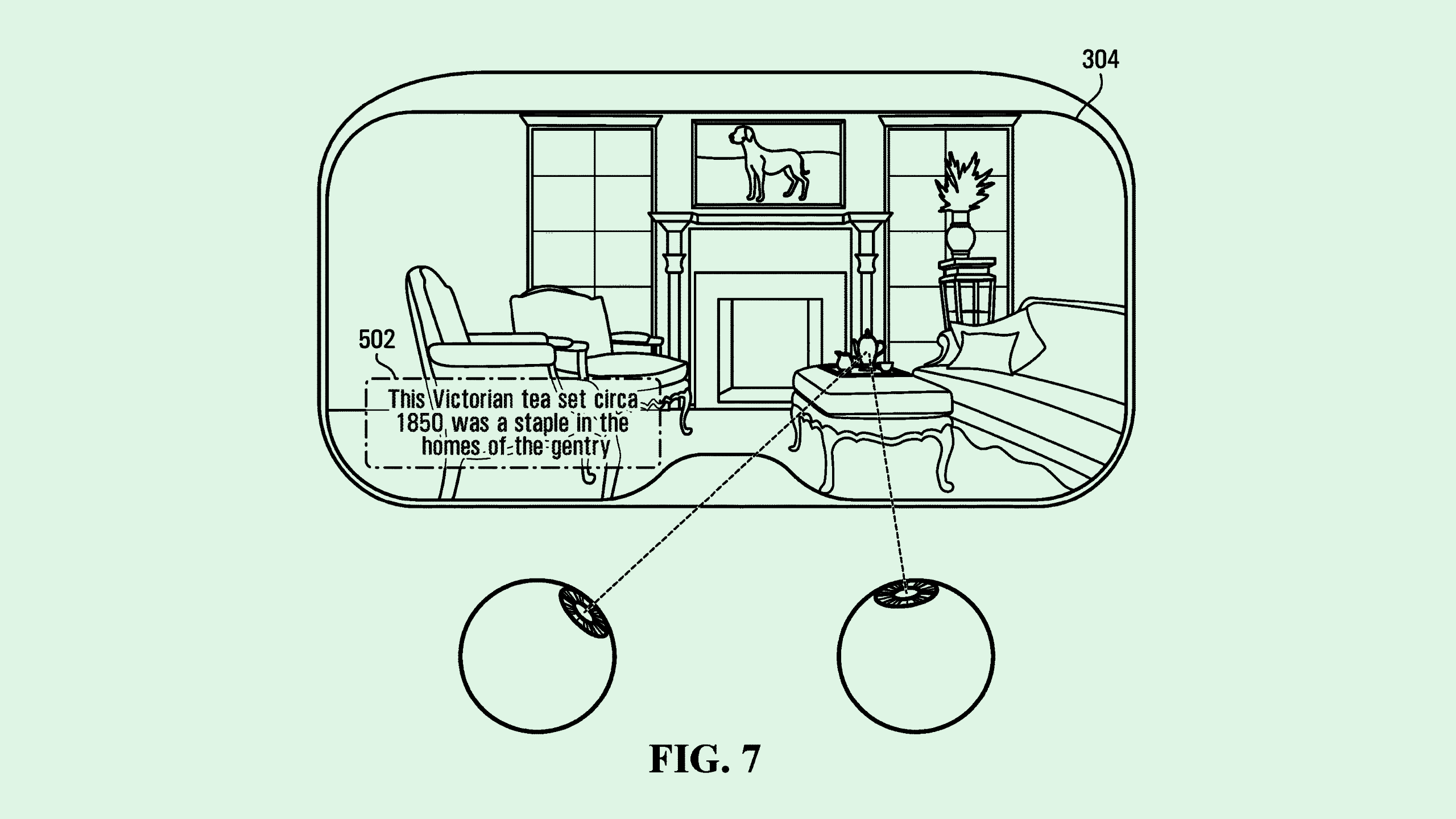Shopify Gaze-Tracking Tech May Signal Sights Set on an AR Future
Shopify wants to track your depth perception.

Sign up to uncover the latest in emerging technology.
Shopify wants to make sure it’s making a good impression.
The tech firm filed a patent application for a “responsive user interface based on gaze depth.” To put it simply, this tech uses artificial reality eye-tracking to change or activate certain virtual objects in a user’s field of view when they’re wearing a headset or pair of glasses, aiming to create a more engaging experience.
“Gaze direction may be used to enhance user interaction,” Shopify said in the filing. “As an example, if the user is looking towards a virtual character rendered on the display, the virtual character may change its facial expression.”
While plenty of tech firms have researched gaze-tracking tech, this patent specifically details a way to track gaze depth to determine focus, as direction alone “might not be indicative of the item at which the user is looking.”
This system uses cameras and optical sensors, such as light detectors, to detect corneal reflections and changes in pupils to track gaze depth. Shopify would then change the user interface based on this data.
For example, if the system notices a user is focusing on a specific virtual object in the background of a scene, it may expand that object and provide more information about it. Or, if it notices the user has adjusted their gaze, it would make that object “less visually prominent.”
Along with creating a more intuitive user experience, this may help ease the issue of eye strain, a common conundrum for AR developers.
Several tech companies that are working on AR tech have sought to patent their own methods of tracking user gaze, including Apple, Microsoft, Meta, and more. The difference between these firms and Shopify, however, is that they all have expansive resources and dedicated hardware roadmaps. Meanwhile, Shopify’s main focus on point-of-sale technology and digital commerce is far from creating its own artificial reality headset.
Shopify has gone after several patents in the augmented reality space to date, including AR shopping, multi-user AR experiences and a merchant photography assistant. Taken together, the filings could signal that it’s preparing for these devices to be much more commonplace, said Jake Maymar, AI strategist at The Glimpse Group.
“Shopify is trying to find the thing they can patent that everyone is going to use,” Maymar said. “It’s kind of like securing their space.”
While this patent focuses just on adjusting user interfaces, sentiment analysis is quickly becoming part of the picture, said Maymar. While the validity of emotion-reading AI is highly controversial, these filings indicate that tech firms see a lot of potential in being able to read the look on your face, Maymar said.
“It makes sense that Shopify would also be interested in this because, ultimately, that’s how they’re going to sell goods,” said Maymar. “It’s a tremendous power that a brand can have by having a positive association.”
However, artificial reality devices collect a ton of user data just in the process of operations, and may feel too close for comfort for some consumers. Though this data can be useful to advertisers, it comes at the expense of user privacy, said Maymar. “Unfortunately, if you want privacy, you’re going to have to actively seek it out.”











